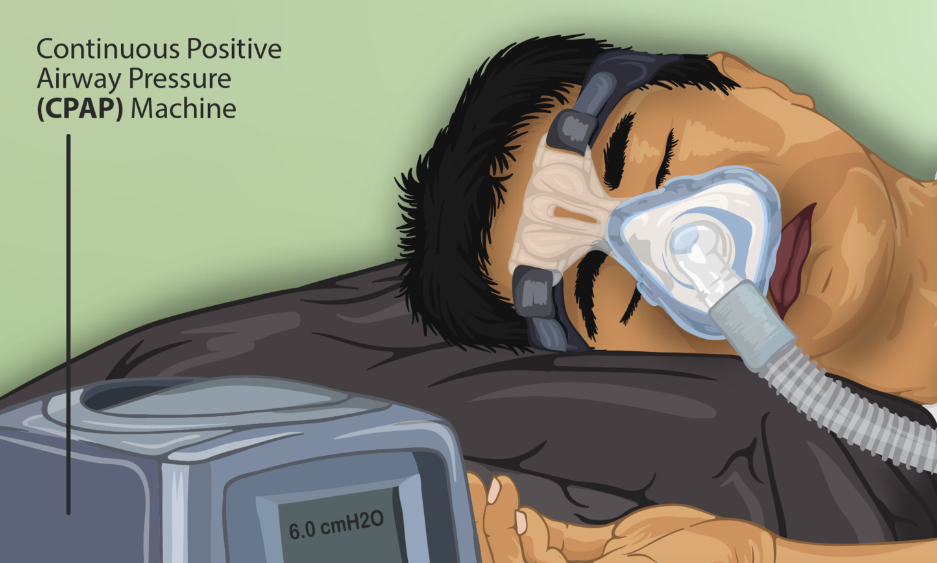

Sleep apnea is a potentially serious sleep condition in which breathing stops and begins repeatedly. You may have mild sleep apnea if you snore loudly and feel fatigued even after a full night's sleep. For moderate to severe levels of sleep apnea sleep doctor recommends CPAP therapy.
If you've been advised to use a CPAP machine to treat your sleep disorder, you might be wondering how a CPAP machine works. many CPAP machines and masks use compressed air to treat snoring and sleep disorders; special considerations may be required if you have central sleep apnea.
This post examines CPAP machines, including CPAP's history, how it works, and the side effects of CPAP treatment for obstructive sleep apnea.
Since 1981, Continuous Positive Airway Pressure (CPAP) machines have been used for treating obstructive sleep apnea. Dr Colin Sullivan was the first to realise the potential value of a steady, pressured airflow generated by his mother's hoover cleaner's motor. Earlier, severe sleep apnea alone was treated by a tracheostomy, which bypassed the collapse of the throat.
He experimented with a fitted mask, tubing, and a machine capable of producing air pressure, of resolving the sleeping disorder. The result was a spectacular discovery that was regarded with suspicion at first. It took five years for the devices to be manufactured and sold commercially.
The latest type of CPAP mask operates on the same principles as Dr Sullivan's original inventions. Pressures are now produced by smaller, quieter motors and room air (not oxygen) is filtered and compressed according to the various pressure settings advised by your sleep specialist.
Sleep apnea machines are programmed to apply air pressure ranging from 4 to 25 centimetres of water pressure (CWP).
This air is typically pressurized air transported through a heated humidifier before being transferred to the mask interface through the tubing.
A cushion is formed along the upper airway by the steady passage constant flow of compressed air. The device is known as a pneumatic (air) splint that prevents the throat from collapsing. This device prevents the soft palate, uvula, and tongue from sliding into the airway. It lowers the vibration that causes loud snoring.
It may also help to make positive breathing habits, reduce nasal swelling and clear mucus from the airway. When disrupted sleep dissolves, breathing normalises and sleep quality improves with lower pressure in the supporting airway. Oxygen levels are maintained throughout. Through this machine process treating sleep apnea is easy and its major implications can be avoided.
Automated Continuous Positive Airway Pressure Machines commonly known as automatic positive airway pressure machines differ slightly in their process. They can detect an airway collapse by measuring resistance and respond by boosting pressure as needed during the night to resume breathing and address any sleep disorders. These devices will also test lower pressures and adjust the prescribed pressure accordingly.
Some individuals tend to be concerned about the effects of what appears to be "artificial" or "unnatural" types of CPAP masks. Thankfully, there are only a few side effects.
Nonetheless, it is critical to have help when you first start using a CPAP machine to avoid negative effects and ensure the successful use of this machine. It is critical to communicate with your healthcare team as soon as possible so that they can assist you with troubleshooting.
An ill-fitting mask and a dry mouth are two of the most common types of CPAP machines or mask-related issues. Mask shape modifications and humidification can help to ease these issues. Similarly, air leakage, bed partner issues, and air swallowing (aerophagia) are also typical problems and should be handled to avoid discontinuance.
Asthma, blood pressure or chronic obstructive pulmonary disease is not aggravated by CPAP therapy (COPD). Rather than triggering a stroke, therapy lessens the likelihood of getting one.
The nasal sinuses and inner ears and facial hair are usually unaffected by the treatment, while case studies imply modest amounts of pressure that can be transmitted across the face tissues.
There is some evidence that an extremely tight or restrictive CPAP device and nasal congestion may impair mid-face growth in children or cause skin irritation, although this can be avoided if therapy the nasal mask is monitored and modified.
It can take some time for one to adjust and operate a CPAP mask. Generally, considering the advantages of CPAP therapy for better sleep itself, you're likely to find that its negative effects are minor and easy to avoid. Fortunately, you don't need to be an expert on machines to use them.
It is wise to check in with your healthcare provider if you're feeling uneasy in any way. Only a well-qualified, board-certified sleep expert will be able to examine your health, analyse your sleep study, and recommend the best treatment options for you.
Leave a comment